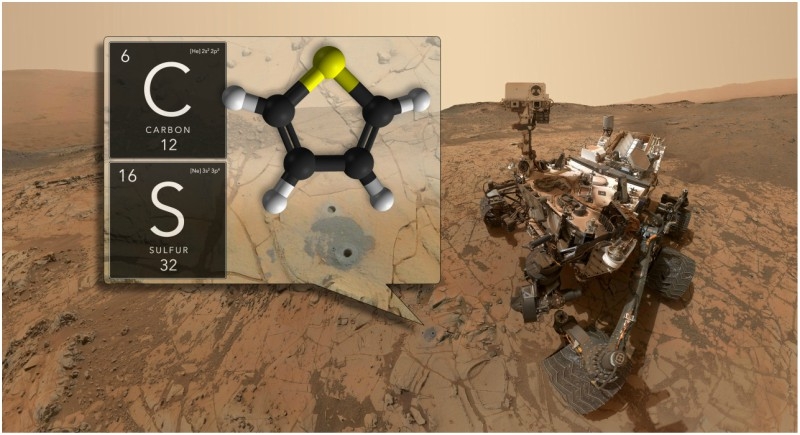NASA puts two steps forward in search for life on Mars: Swelling, shrinking methane on Martian land raises hopes of life on red planet
Washington, June 8: Since many time NASA is in the search mode of life on the Red Planet (Mars). Till now it has not been possible that it could find any Aliens but yes NASA was successful to put two steps forward in its mission to find life as it has detected organic molecules at the harsh surface of Mars! And what’s important about this is it now has a lot more certainty that there are organic molecules preserved at the surface of Mars. It didn’t know that before.

Today’s edition of the journal Science appeared the new findings – “tough” organic molecules in three-billion-year-old sedimentary rocks near the surface, as well as seasonal variations in the levels of methane in the atmosphere.
Second, they have found seasonal variations in methane levels in the atmosphere over 3 Mars years (nearly 6 Earth years). These two discoveries increase the chances that the record of habitability and potential life has been preserved on the Red Planet despite extremely harsh conditions on the surface.
“With these new findings, Mars is telling us to stay the course and keep searching for evidence of life,” said Thomas Zurbuchen, associate administrator for the Science Mission Directorate at NASA Headquarters, in Washington. “I’m confident that our ongoing and planned missions will unlock even more breathtaking discoveries on the Red Planet.”
Sample Analysis at Mars (SAM) did two things on Mars for this discovery.
One - it tested Martian rocks. After the arm selects a sample of pulverized rock, it heats up that sample and sends that gas into the chamber, where the electron stream breaks up the chemicals so they can be analyzed.
What SAM found are fragments of large organic molecules preserved in ancient rocks which we think come from the bottom of an ancient Martian lake. These organic molecules are made up of carbon and hydrogen and can include other elements like nitrogen and oxygen. That’s a possible indicator of ancient life…although non-biological processes can make organic molecules, too. The other action SAM did was ‘sniff’ the air.
Water-rock chemistry might have generated the methane, but scientists cannot rule out the possibility of biological origins. Methane previously had been detected in Mars' atmosphere in large, unpredictable plumes. This new result shows that low levels of methane within Gale Crater repeatedly peak in warm, summer months and drop in the winter every year.
To identify organic material in the Martian soil, Curiosity drilled into sedimentary rocks known as mudstone from four areas in Gale Crater. This mudstone gradually formed billions of years ago from silt that accumulated at the bottom of the ancient lake. The rock samples were analyzed by SAM, which uses an oven to heat the samples (in excess of 900 degrees Fahrenheit, or 500 degrees Celsius) to release organic molecules from the powdered rock.
SAM measured small organic molecules that came off the mudstone sample – fragments of larger organic molecules that don’t vaporize easily. Some of these fragments contain sulfur, which could have helped preserve them in the same way sulfur is used to make car tires more durable, according to Eigenbrode.
The results also indicate organic carbon concentrations on the order of 10 parts per million or more. This is close to the amount observed in Martian meteorites and about 100 times greater than prior detections of organic carbon on Mars’ surface. Some of the molecules identified include thiophenes, benzene, toluene, and small carbon chains, such as propane or butane.
Finding methane in the atmosphere and ancient carbon preserved on the surface gives scientists confidence that our Mars 2020 rover and ESA’s (European Space Agency’s) ExoMars rover will find even more organics, both on the surface and in the shallow subsurface.